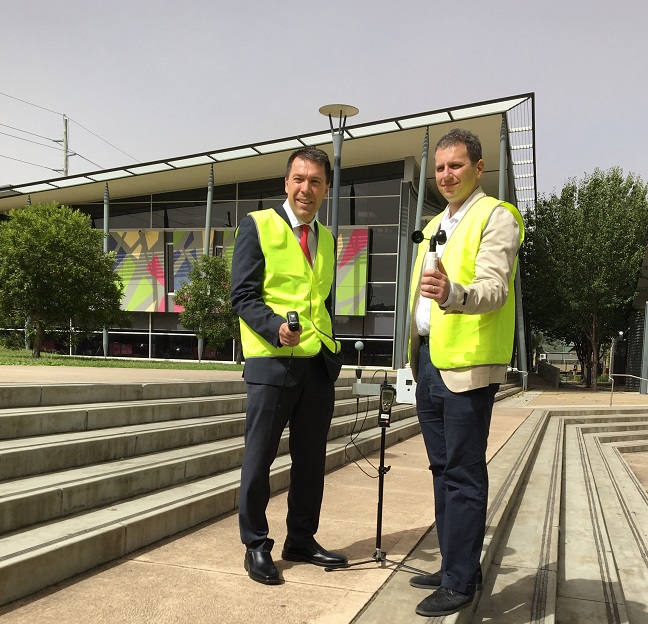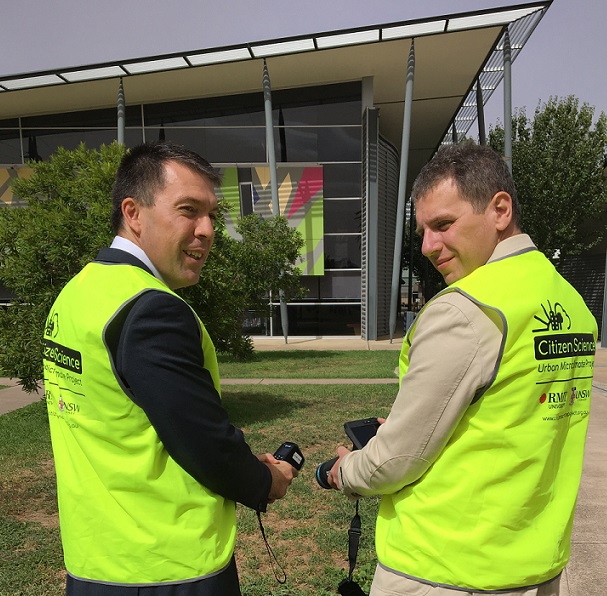We have all been talking about how hot and humid late summer has been this year, but talk is cheap.
Now we can actually take some action that could lead to a reduction in temperature levels.
Residents can arm themselves with heat sensors as part of an arsenal of scientific tools to help map Campbelltown’s heat levels, in an interactive community first that will compare data from 21 other councils across Australia.
The project is being run by RMIT University and the University of NSW in collaboration with councils to collect enough data to help better understand, counter and adapt to extreme heat conditions in urban areas, where the air temperature is frequently three degrees celsius higher than in non-urban areas.
The Citizen Science Urban Microclimate Project will be carried out from 2pm-5pm on February 22, 23 and 24 in the Campbelltown area, and volunteers are being sought to participate.

Action on urban heat: Campbelltown mayor George Brticevic with UNSW Built Environment lecturer Riccardo Paolini at Hallinan Park, Ingleburn yesterday morning.
“We are determined to reduce the impact of urban heat on our city,” says Mayor George Brticevic, a big supporter of the project.
“There are a range of ways we are working towards our goals with projects like the Billabong precinct, the planting of thousands more trees in suburban and urban areas and now, with the detailed measurement of the hottest parts of the city,” Cr Brticevic said.
“It is a well known fact that built-up areas with dark buildings and less foliage create an urban heat island effect that pushes up temperatures, reduces air quality and can have a knock-on effect on vulnerable people’s health, especially the elderly and children,” he said.
“If you have an interest in this topic I urge you to sign up to participate. It will help give us a better understanding of how architecture and the streetscape as well as material selection is contributing to extreme urban heat in some places.”

Participants will be directed to an area and given equipment to measure and map the ambient temperature and humidity distribution in their neighbourhood.
The temperatures of urban surfaces like car parks or sidewalks depend on how much they reflect the sunlight.
This will also be observed during experiments, detecting which surfaces contribute more to urban overheating. Details, like tree coverage and shade, will be noted and the heat in green spaces logged to compare differences.
After the workshop, volunteers can register to receive a Bluetooth temperature sensor to continue logging data through their smartphone.
Council is committed to better understanding the urban heat island effect and is also currently working in partnership with the Cooperative Research Centre for Low Carbon Living to develop a tool that will help inform policy and decision-making relating to potential building and urban interventions for cooling streetscapes, precincts and cities.
To sign up go to www.citizenscienceproject.org.au/participant-registration

